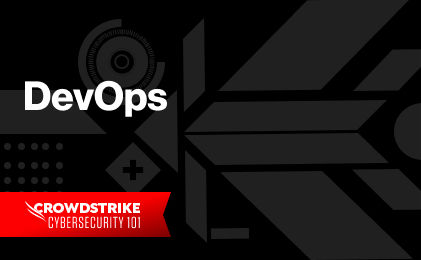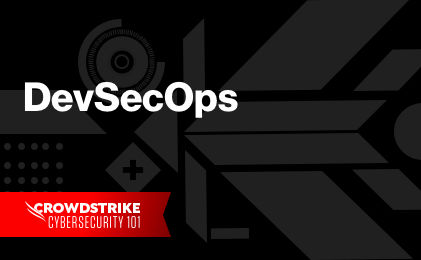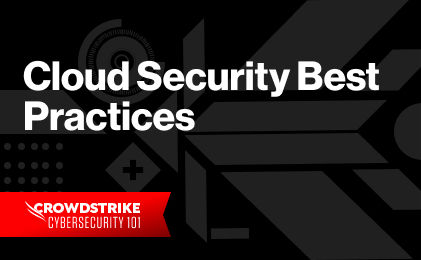Master CNAPPs for Superior Cloud Security
Master CNAPPs for Superior Cloud Security
Though many businesses use DevOps and DevSecOps to create and maintain code efficiently and securely, some struggle to understand the difference between DevSecOps vs. DevOps. The two models are similar and share many aspects, but they are not the same. To choose the right model, it’s important to consider the key similarities and differences between DevOps and DevSecOps.
Understanding DevOps and DevSecOps
DevOps is a collaborative organizational model that brings together software development and operations teams. DevOps helps IT departments meet expectations and improve efficiency. Organizations adopting a DevOps approach generally hire or train generalists rather than specialists — DevOps engineers will often have knowledge and background in both coding and system administration.
DevSecOps is the practice of integrating security throughout the software development life cycle (SDLC). It grew out of the DevOps movement and builds on that same framework. This model becomes vital when working in the cloud, which requires following specific security guidelines and practices.
Because both models share cultural similarities and focus on collaboration and automation, it can be easy to confuse them, but they address different business goals. A helpful way of thinking of DevOps vs. DevSecOps is that all DevSecOps teams use DevOps, but not all DevOps teams use DevSecOps.
DevOps focuses on communication between different teams to achieve greater efficiencies and foster a sense of productive collaboration. The goal is to break down silos and reduce bottlenecks that have traditionally led to a slower SDLC.
DevSecOps focuses on “shifting security left” into active development instead of addressing it after code has been completed. The goal is to strengthen deployment security and compliance by addressing security concerns as they arise.

The Schunk Group
Read this customer story and learn how The Schunk Group, an international high-tech company, protects its IT Infrastructure with cloud-native CrowdStrike Security.
Read Customer StoryDevOps vs. DevSecOps: The similarities
DevSecOps extends the core principles of DevOps by integrating security practices into the entire SDLC, ensuring that security is not treated as an afterthought but as an integral part of the development process.
Both methodologies prioritize collaboration, automation, continuous improvement, and shared responsibility, with DevSecOps specifically emphasizing the integration of security practices throughout the software development life cycle.
| Aspect | DevOps | DevSecOps |
|---|---|---|
| Collaboration | DevOps emphasizes collaboration between development and operations teams to increase the efficiency of the development pipeline. | DevSecOps also promotes collaboration but extends it to include security teams, fostering a culture of shared responsibility. |
| Automation | Advocates for automation of development, testing, and deployment processes to improve efficiency and reliability. | Similarly emphasizes automation but includes automation of security processes such as vulnerability scanning and security testing. |
| Continuous integration/continuous delivery (CI/CD) | Encourages the adoption of CI/CD pipelines for rapid and reliable software releases. | Also adopts CI/CD practices but integrates security testing and compliance checks into the pipeline for secure deployments. |
| Culture shift | Promotes a cultural shift toward shared ownership, transparency, and continuous improvement. | Requires a similar cultural shift but specifically emphasizes security awareness and collaboration across teams. |
| Focus on efficiency | Aims to accelerate delivery, increase efficiency, and reduce time to market. | Shares a focus on efficiency but adds a layer of security integration to ensure compliance and resilience. |
| Shared responsibility | Encourages a shared responsibility for quality and performance across development and operations teams. | Extends the concept of shared responsibility to include security, making security everyone's responsibility throughout the SDLC. |
DevOps vs. DevSecOps: The differences
In the DevSecOps model, there is a cultural shift toward security awareness and collaboration across development, operations, and security teams to achieve the goal of delivering secure and resilient software applications. Security is incorporated into program development at the forefront to ensure cohesive protection across the full SDLC.
| Aspect | DevOps | DevSecOps |
|---|---|---|
| Focus | Collaboration between development and operations teams to streamline software delivery. | Integration of security practices into the DevOps process to ensure secure and resilient software delivery. |
| Primary goal | Faster and more efficient software development and delivery. | Secure and resilient software delivery with a focus on continuous security. |
| Security integration | Basic security considerations integrated into processes. | Security practices integrated from the outset (i.e., “shifted left”), with security as a shared responsibility. |
| Automation | Automation of development, testing, and deployment processes. | Automation of security testing, vulnerability scanning, compliance checks, etc. |
| Team involvement | Development and operations teams integrated into a collaborative whole. | Development, operations, and security teams working together collaboratively. |
| Life cycle view | Development and delivery of software. | Security integrated at every stage of the SDLC. |
| Cultural shift | Focus on breaking down silos between development and operations teams. | Emphasis on a cultural shift toward security awareness and collaboration between teams. |
| Tools and technologies | CI/CD tools, configuration management, monitoring tools, infrastructure as code (IaC). | Security testing tools, vulnerability scanners, security information and event management (SIEM) systems. |
Prioritizing security
In the past, when the SDLC could be weeks or even months long, addressing security concerns at the end of software development might have made more sense. Given today’s truncated SDLC and the market’s demand for continuous feature development, holding up deployments to make a security pass just doesn’t work.
By “shifting left,” DevSecOps moves security concerns into the realm of the production environment. This has multiple benefits, but foremost among them is that it helps ensure security concerns are always on engineers’ minds. This can prevent small security concerns from becoming major issues.
With DevSecOps, early intervention can help engineers address bugs and security flaws in production, saving them from stopping deployment or dealing with a security issue after the fact. DevSecOps also ensures continuous visibility, a major asset when managing cloud environments.
DevSecOps best practices
- Implement a culture shift. DevSecOps takes the DevOps model’s focus on breaking down silos a step further by fully integrating responsibility for security into the development pipeline. This may require some radical thinking in terms of cultivating the proper culture shift. Consider including the security team in production meetings, training IT employees on security processes, and encouraging developers and operations personnel to surface security concerns directly.
- Automate security processes. Automated security tools can detect and respond to threats much more quickly and save developers headaches in the process.
- Integrate proper tools. Though DevSecOps is primarily a cultural and operational mindset, ensuring teams have the right tools to implement the processes will go a long way toward ensuring adoption. This is where a trusted partner like CrowdStrike Falcon® Cloud Security can help. Bringing continuous monitoring and a single console interface, Falcon Cloud Security regularly scans your infrastructure for attack surfaces that could lead to a breach.
- Iterate and evaluate. Adopting DevSecOps won’t instantly solve all your problems. It’s a culture shift, not a cure-all. Regularly assessing the performance of processes and then iterating on them will ensure that you are constantly adapting to the challenges your organization faces.
- Adopt security as code. Using the IaC framework, security as code employs automation to streamline security processes and ensure everyone on the team is working from a single source of truth. This will help keep compliance in line and reduce misconfigurations that can lead to a breach.
Transitioning from DevOps to DevSecOps
When transitioning, be prepared to get your teams on board before changing your process. Preparation involves making sure everyone is on the same page about the necessity and benefits of the transition. There are myriad tools at your disposal for improving security practices, and there are a few pitfalls to avoid for a successful transition.
What to expect when transitioning
A transition generally means shifting security left or moving the process closer to the customer. Preparing teams to understand the need for a transition and how it will affect your application development is a vital first step. Everyone involved should understand the cultural change required, with a renewed and constant focus on security.
To transition successfully, your business will need to train employees on secure coding practices. This requires the collaboration of your security team alongside developers and operations. An education in cybersecurity issues is an important early step for your developers.
Preparing to transition
When preparing for this transition, you will need to decide on the combination of security practices that are best for your business. There are many security testing methods, but a few major ones include the following:
- Dynamic application security testing (DAST), which puts your team in the perspective of attackers to detect vulnerabilities and security gaps.
- Static application security testing (SAST), which examines code to identify security flaws.
- Interactive application security testing (IAST), which combines DAST and SAST and uses software to monitor an application’s performance.
- Runtime application self-protection (RASP), which uses real-time data to detect and resolve attacks on an application as they happen.
One concrete example of DAST is penetration testing. Penetration testing, or ethical hacking, simulates a cyberattack to test your business’s cybersecurity capability. It follows tactics from the MITRE ATT&CK® framework.
Penetration testing also comes in multiple types. Internal penetration testing assesses your business’s internal network. A web application penetration test evaluates an application on the web using a three-phase process. Penetration testing — as well as numerous other security practices — should take place before a breach occurs.
What to avoid when transitioning
Though DevSecOps can be a powerful addition to your process in terms of security, there are several things to avoid:
- Choosing the wrong tools. There are many types of security applications. Choosing the tools that are relevant to your code and satisfy the requirements for your current use case and future use cases can help you avoid a painful transition.
- Not involving your security team. The DevSecOps process is continuous and happens at all phases of the development cycle. Involving your security team from the start helps the security remain consistent. Security experts can help guide you on which tools are right for your business.
- Prioritizing speed over quality. The focus of DevOps is speed. When you transition, the end goal is a secure and functional pipeline. There will be additional steps and extra time added for properly integrated security practices.
- Failing to monitor the code. Because code is constantly changing, monitoring the code should be an ongoing task of the DevSecOps team. Introducing new libraries, patches, and configurations can expose new vulnerabilities, so constant monitoring is vital.
By avoiding these common pitfalls, you can make the transition smooth for your business.
Make the transition with CrowdStrike
Adopting DevSecOps can lead to a safer and more compliant software development pipeline and ultimately a better product. Partnering with a trusted provider can make the difference between a successful transition and a failed experiment. CrowdStrike Falcon Cloud Security protects your pipeline with cloud-native architecture, a single console, and automated compliance tools.





